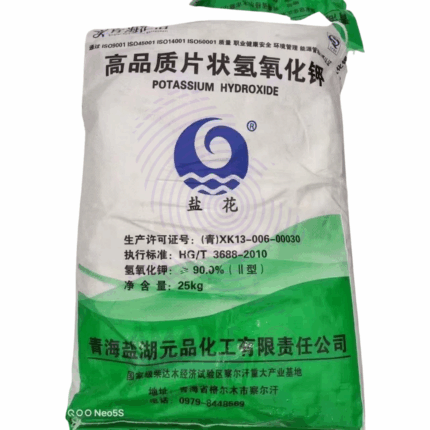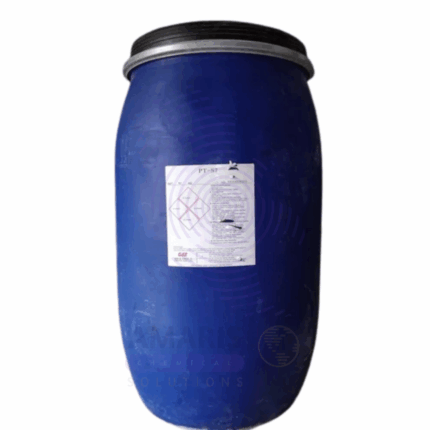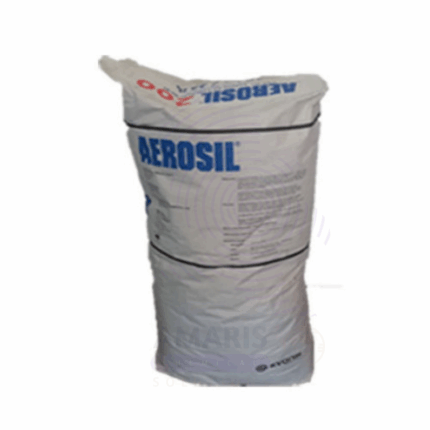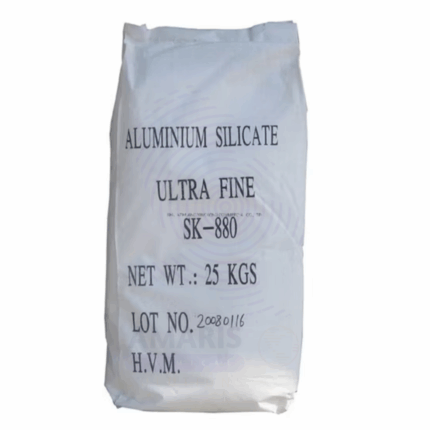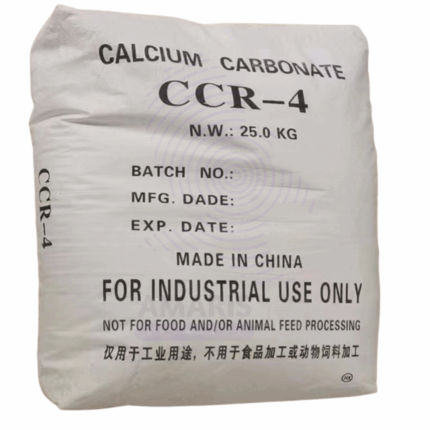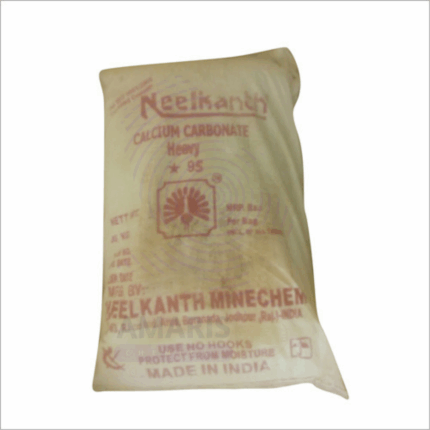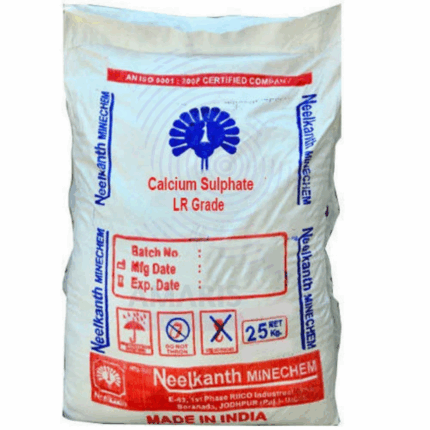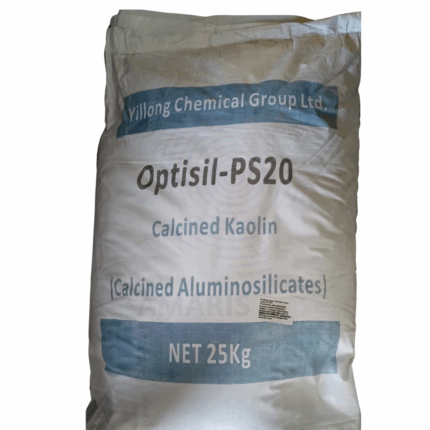Binder
Whatsapp Order
A binder is a broad category of substances—organic or inorganic—used to hold different materials together in a cohesive mass. Common binders include natural polymers (starch, cellulose derivatives, proteins), synthetic resins (PVA, acrylics, phenolics), and inorganic binders (clays, cement, lime). They are essential in industries such as pharmaceuticals, construction, coatings, ceramics, adhesives, and printing, where they provide structural integrity, adhesion, and controlled release properties.
Description
Table of Contents
Toggle
Binder
Primary Uses
- Pharmaceuticals
- Serves as a granulating and tablet-binding agent (e.g., starch, PVP, HPMC).
- Enables sustained-release formulations by controlling drug release rates.
- Incorporates coatings to ensure film forming or taste masking.
- Construction & Ceramics
- Used in cement, mortar, and plaster to hold aggregates together (e.g., lime, cement).
-binds ceramic powders in clay bodies, tile, and brick manufacturing.
- Coatings, Paints & Inks
- Acts as a film-forming agent in paints, varnishes, and inks (e.g., acrylic, epoxy resins).
- Provides adhesion, gloss, and durability.
- Adhesives & Glues
- Forms adhesive products ranging from PVA glue to epoxy and hot-melt adhesives.
Secondary Uses
- Metallurgy: Binders in powder metallurgy to hold metal powders before sintering.
- Food Industry: Used in processed foods as binding agents (e.g., starch, gums).
- Animal Feed: Enables pellet formation for feed efficiency.
- Cosmetics: Binders in compressed powders and pressed makeup.
KEY PRODUCT FEATURES
1. Basic Identification Attributes
- Chemical Name (IUPAC): Varies by binder type (e.g., Polyvinyl acetate, Starch)
- Common/Trade Name: Binder
- CAS Number: Varies depending on specific binder
- HS Code: Varies (e.g., organic binders 3901–3917; inorganic 2523–2526)
- Molecular Formula: Varies
- Synonyms: Adhesive agent, binding agent, film former
2. Physical & Chemical Properties
- Physical State: Powder, granule, liquid, emulsion, or paste
- Color & Odor: Typically white/clear; odorless or mild smell
- Melting/ TG Range: Varies; some degrade instead of melting
- Solubility: Water-soluble (e.g., starch), oil-soluble (e.g., phenolics), or water-dispersible
- Viscosity: Varies with concentration and binder chemistry
- pH (aqueous systems): Slightly acidic to neutral (pH 4–8)
3. Safety & Hazard Attributes
- Hazard Class (GHS): Varies; many are non-hazardous, but some (like solvents) may be irritants or flammable
- NFPA Ratings: Typically Health 0–1, Flammability 0–2, Reactivity 0–1
- Exposure Limits: Depends on chemistry; dust or solvent handling requires control measures
- Reactivity: Usually stable; may react with strong oxidizers or acids/bases depending on type
4. Storage & Handling Attributes
- Storage Conditions: Cool, dry area; away from ignition sources for solvent-based types
- Container Type: Sealed drums or cans for liquids; bags or bulk containers for powders
- Shelf Life: 1–3 years, depending on type and storage
- Special Handling: Avoid dust generation and solvent vapor exposure; maintain temperature control
5. Regulatory & Compliance Attributes
- Status: Many binders are GRAS or comply with FDA/EU guidelines; some require REACH/TSCA registrations
- Transportation: Generally non-regulated, unless solvent-borne and flammable
- Waste Disposal: According to local hazardous waste or standard industrial disposal
6. Environmental & Health Impact
- Ecotoxicity: Varies—natural and water-based binders typically low toxicity; synthetic/solvent-borne may pose risks
- Persistence: Organic binders degrade over time; synthetic resins are persistent
- Carcinogenicity/Mutagenicity: Typically low risk; solvent-based binders may involve VOCs
- Biodegradability: Natural binders are generally biodegradable; synthetic resins resist biodegradation
SAFETY HANDLING PRECAUTIONS
Safety Handling Precautions
- Wear appropriate PPE (gloves, goggles, masks) to prevent skin or respiratory exposure.
- Handle powders with dust controls; ventilate solvent-borne types.
- Avoid ignition sources for flammable binders.
- Prevent contamination and control spills promptly.
First Aid Measures
- Inhalation: Move to fresh air and seek medical advice if irritation occurs.
- Skin Contact: Wash with soap and water; seek medical attention if irritation persists.
- Eye Contact: Rinse with water for at least 15 minutes; seek medical care if irritation occurs.
- Ingestion: Rinse mouth; if large amounts consumed, consult medical attention.
Firefighting Measures
- Fire Hazards: Powder types non-flammable; solvent-based binders may be flammable.
- Extinguishing Media: Water spray, foam, dry chemical, or CO₂ depending on binder type.
- Protective Measures: Firefighters should wear suitable protective clothing and breathing apparatus if needed.
Related products
Aerosil 200
$ 6.21
Aluminium Silicate
Aluminium silicate is an inorganic compound composed of aluminum, silicon, and oxygen, often found naturally as a major component of clay minerals such as kaolinite, halloysite, and other aluminosilicates. It is a white to off-white powder with excellent thermal stability, chemical inertness, and physical durability. Due to its wide range of physicochemical properties—including high melting point, non-toxicity, and adsorptive capabilities—aluminium silicate is extensively used across diverse industries including ceramics, paints, paper, rubber, plastics, cosmetics, and pharmaceuticals. Its unique structure imparts benefits such as heat resistance, improved mechanical strength, and anti-caking properties, making it a vital raw material in both industrial and consumer products.
Calcium Carbonate Filler
Calcium Carbonate Filler is a high-quality, uncoated ground calcium carbonate (GCC) specially engineered for use as a filler in polyethylene (PE) and other polyolefin resins. This grade of calcium carbonate is designed to enhance the physical and mechanical properties of plastics while providing cost-effective bulk and improved processing. It is a fine, white, odorless powder with excellent brightness, high purity, and uniform particle size distribution. Its use improves stiffness, impact resistance, dimensional stability, and surface finish in polyethylene applications such as films, sheets, pipes, and molded parts.
Calcium Carbonate Heavy
Calcium Carbonate Heavy is a high-density, finely ground, natural mineral primarily composed of calcium carbonate (CaCO₃). Known for its higher bulk density compared to regular grades, this filler is widely used in applications requiring enhanced weight, opacity, and strength. It is commonly employed as a functional filler and extender in industries such as plastics, paints, coatings, adhesives, rubber, paper, and construction materials. Its inert nature, whiteness, and particle size distribution make it suitable for improving mechanical properties and surface finish, while also offering cost efficiency by replacing more expensive raw materials.
Calcium Sulphate
Calcium Sulphate is an inorganic compound composed of calcium, sulfur, and oxygen, commonly found in two forms: dihydrate (gypsum, CaSO4·2H2O) and anhydrous (CaSO4). It appears as a white or off-white crystalline powder or granules with low solubility in water. Calcium Sulphate is widely used in construction, agriculture, pharmaceuticals, food industry, and various industrial applications. It acts as a filler, hardening agent, and drying agent due to its physical and chemical properties. The dihydrate form (gypsum) is notable for use in plaster and cement, while the anhydrous form is often used as a drying agent and in refractory materials.
Carbon Black
Carbon Black is a fine black powder composed of elemental carbon in the form of near-spherical colloidal particles and coalesced particle aggregates. It is produced through the incomplete combustion or thermal decomposition of hydrocarbons such as oil or natural gas. Depending on the manufacturing process (e.g., furnace black, channel black, thermal black, or acetylene black), it exhibits varying particle sizes, surface areas, and structures. Carbon Black is valued for its pigmenting, reinforcing, conductive, and UV-protective properties. It is widely used in rubber production, plastics, inks, coatings, batteries, and electronics. Its high surface area and fine particle size make it indispensable in applications requiring durability, color depth, or conductivity.
Kaolin
$ 1.20
Kaolin is a naturally occurring, fine white clay mineral primarily composed of kaolinite. It features a soft, powdery texture and excellent absorbency. Kaolin is widely used across ceramics, paper, rubber, paint, and cosmetics industries due to its chemical inertness, whiteness, and plasticity. It acts as a filler, coating agent, and extender to enhance product quality and performance.
Whiting
Whiting is a finely ground, white, chalky substance primarily composed of calcium carbonate (CaCO₃). It is widely used as a pigment, filler, and extender in various industrial and commercial applications. Whiting provides opacity, brightness, and smoothness to products, enhancing their appearance and physical properties. Its natural abundance and versatility make it an economical additive in multiple manufacturing processes.


 Preservatives(food)
Preservatives(food) Flavor Enhancers
Flavor Enhancers Acidulants
Acidulants Sweeteners
Sweeteners Antioxidants
Antioxidants Colorants(food)
Colorants(food) Nutraceutical Ingredients (food)
Nutraceutical Ingredients (food) Nutrient Supplements
Nutrient Supplements Emulsifiers
Emulsifiers
 Collectors
Collectors Dust Suppressants
Dust Suppressants Explosives and Blasting Agents
Explosives and Blasting Agents Flocculants and Coagulants
Flocculants and Coagulants Frothers
Frothers Leaching Agents
Leaching Agents pH Modifiers
pH Modifiers Precious Metal Extraction Agents
Precious Metal Extraction Agents
 Antioxidants(plastic)
Antioxidants(plastic) Colorants (Pigments, Dyes)
Colorants (Pigments, Dyes) Fillers and Reinforcements
Fillers and Reinforcements Flame Retardants
Flame Retardants Monomers
Monomers Plasticizers
Plasticizers Polymerization Initiators
Polymerization Initiators Stabilizers (UV, Heat)
Stabilizers (UV, Heat)
 Antifoaming Agents
Antifoaming Agents Chelating Agents
Chelating Agents Coagulants and Flocculants
Coagulants and Flocculants Corrosion Inhibitors
Corrosion Inhibitors Disinfectants and Biocides
Disinfectants and Biocides Oxidizing Agents
Oxidizing Agents pH Adjusters
pH Adjusters Scale Inhibitors( water)
Scale Inhibitors( water)
 Antioxidants(cosmetic)
Antioxidants(cosmetic) Emollients
Emollients Fragrances and Essential Oils
Fragrances and Essential Oils Humectants
Humectants Preservatives
Preservatives Surfactants(cosmetic)
Surfactants(cosmetic) Thickeners
Thickeners UV Filters
UV Filters
 Fertilizers
Fertilizers Soil Conditioners
Soil Conditioners Plant Growth Regulators
Plant Growth Regulators Animal Feed Additives
Animal Feed Additives Biostimulants
Biostimulants Pesticides (Herbicides, Insecticides, Fungicides)
Pesticides (Herbicides, Insecticides, Fungicides)
 Active Pharmaceutical Ingredients (APIs)
Active Pharmaceutical Ingredients (APIs) Excipients
Excipients Solvents(pharmaceutical)
Solvents(pharmaceutical) Antibiotics
Antibiotics Antiseptics and Disinfectants
Antiseptics and Disinfectants Vaccine Adjuvants
Vaccine Adjuvants Nutraceutical Ingredients (pharmaceutical)
Nutraceutical Ingredients (pharmaceutical) Analgesics & Antipyretics
Analgesics & Antipyretics
 Analytical Reagents
Analytical Reagents Solvents(lab)
Solvents(lab) Chromatography Chemicals
Chromatography Chemicals Spectroscopy Reagents
Spectroscopy Reagents microbiology-and-cell-culture-reagents
microbiology-and-cell-culture-reagents Molecular Biology Reagents
Molecular Biology Reagents Biochemical Reagents
Biochemical Reagents Inorganic and Organic Standards
Inorganic and Organic Standards Laboratory Safety Chemicals
Laboratory Safety Chemicals Specialty Laboratory Chemicals(Special Laboratory Equipment)
Specialty Laboratory Chemicals(Special Laboratory Equipment)
 Demulsifiers
Demulsifiers Hydraulic Fracturing Fluids
Hydraulic Fracturing Fluids Scale Inhibitors(oil)
Scale Inhibitors(oil) Surfactants(oil)
Surfactants(oil) Drilling Fluids
Drilling Fluids
 Dyes and Pigments
Dyes and Pigments Bleaching Agents
Bleaching Agents Softening Agents
Softening Agents Finishing Agents
Finishing Agents Antistatic Agents
Antistatic Agents
 Admixtures
Admixtures Waterproofing Agents
Waterproofing Agents Sealants and Adhesives
Sealants and Adhesives Curing Compounds
Curing Compounds Concrete Repair Chemicals
Concrete Repair Chemicals Anti-Corrosion Coatings
Anti-Corrosion Coatings
 Surfactants(cleaning)
Surfactants(cleaning) Builders
Builders Enzymes
Enzymes Solvents (Cleaning)
Solvents (Cleaning) Fragrances
Fragrances
 Electronic Chemicals
Electronic Chemicals Catalysts
Catalysts Lubricants
Lubricants Photographic Chemicals
Photographic Chemicals Refrigerants
Refrigerants Automotive chemicals
Automotive chemicals Pyrotechnic Chemicals
Pyrotechnic Chemicals
 Biodegradable Surfactants
Biodegradable Surfactants Bio-based Solvents
Bio-based Solvents Renewable Polymers
Renewable Polymers Carbon Capture Chemicals
Carbon Capture Chemicals Wastewater Treatment Chemicals
Wastewater Treatment Chemicals
 Pigments
Pigments Solvents(paint)
Solvents(paint) Specialty Coatings
Specialty Coatings Binders/Resins
Binders/Resins Additives
Additives Driers
Driers Anti-Corrosion Agents
Anti-Corrosion Agents Functional Coatings
Functional Coatings Application-Specific Coatings
Application-Specific Coatings
 Fresh Herbs
Fresh Herbs Ground Spices
Ground Spices Whole Spices
Whole Spices Spice Blends
Spice Blends Dried Herbs
Dried Herbs
 Leavening Agents
Leavening Agents Dough Conditioners
Dough Conditioners Flour Treatments
Flour Treatments Fat Replacers
Fat Replacers Decoratives
Decoratives Preservatives(baking)
Preservatives(baking)
 Plasticizers & Softeners
Plasticizers & Softeners Reinforcing Agents
Reinforcing Agents Adhesion Promoters
Adhesion Promoters Vulcanizing Agents
Vulcanizing Agents Antidegradants
Antidegradants Blowing Agents
Blowing Agents Fillers & Extenders
Fillers & Extenders Accelerators & Retarders
Accelerators & Retarders
